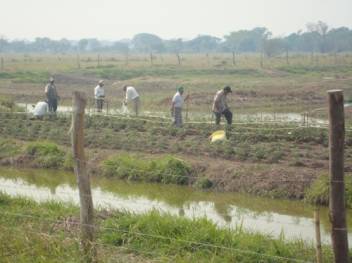Through HelpAge’s disaster risk reduction (DRR) work with communities and older people’s associations, we have found that older people often hold very valuable knowledge. On International Day of Disaster Risk Reduction, we look at how this insight can be harnessed.
The three lenses of knowledge
Depending on the context in which people live, and how long they and their ancestors have been there, the knowledge of older generations can vary greatly. We at HelpAge consider there to be three lenses of knowledge, and an older person is likely to have elements of each of them.
The first is indigenous knowledge: the social-ecological information handed down the generations through stories, tradition and belief structures within communities. This may go back centuries.
Then there is traditional knowledge. This is similar but may have been acquired by more recent generations. It comprises the dynamic and complex understanding, skills and philosophies generated by people’s interaction with their social and natural environment, and may be held within wider communities than just the indigenous populations.
Finally, there is the life experience of the individual. This is where age can reap benefits. Older people often have accounts of previous events and disasters, remembering the impact and the ways that they coped with them. They can bring their perspective of how they endured these incidents depending on their age at the time, their work, if they had young people to care for or if they are disabled, for example.
The value of knowledge
All of these knowledge types can have significant value in disaster risk reduction work. In local contexts the range of hazards known and studied by science may be relatively small. Lower income countries, for example, have only begun in-depth monitoring of hydro and geological systems in recent decades.
This leaves a massive knowledge gap on environmental and hazard base lines, which in terms of prediction and monitoring can be a significant hindrance in mitigation and preparedness work.
Indigenous, traditional and life experiences of local populations, and especially among the older generations, can be invaluable to scientists. It can point them in the right direction, give them clues to local unknowns, and help them map previous disasters and their impact on the community and environment. Their experiences may also provide direct knowledge on methods for adapting or responding to these disasters.
Not the magic bullet
Local knowledge is not a panacea for DRR. Knowledge is subject to uncertainty and bias, while memory can be foggy or subject to fantasy and exaggeration.
Yet the combination local and scientific knowledge can lead to better DRR understanding, learning and improvements for both local communities and scientists. This allows the building of a much richer picture of risk than science or local knowledge can do alone.
Harnessing local knowledge in practice
HelpAge has identified a need to develop tools and methods for effectively collecting, reviewing and validating local knowledge alongside scientific expertise, giving a particular emphasis on those which are replicable across community-based DRR projects.
For example, HelpAge’s DRR work in Bolivia looked at how to minimise the increasing impact of floods and droughts. When older people were consulted they recounted a technique used in pre-Columbian times whereby raised island banks called camellones or “camel humps” would be planted with vegetables and fruit.
the increasing impact of floods and droughts. When older people were consulted they recounted a technique used in pre-Columbian times whereby raised island banks called camellones or “camel humps” would be planted with vegetables and fruit.
The raised beds allow water to drain off, keeping crops safe during times of flood, but also improving water retention during times of drought. Scientists also looked at the situation from a climate change perspective and found that the technique would reduce soil erosion, increase soil nutrient retention, and improve the diversity and flexibility of local food security by improving the production of crops such as maize, rice, cassava and vegetables.
During another DRR project in Borena, Ethiopia, a dialogue between climate science experts from Bule Hola University and older pastoralists was set up to exchange knowledge and understanding on changing climatic patterns and their impact on the community. This demonstrated that we cannot separate obtaining knowledge from raising awareness among communities of the benefits of possessing and sharing information.
Continuous conversation and opportunities to give feedback are necessary to give the communities and older people ownership of any initiative and the ability to contextualise scientific information easily.
In Kenya, systematic work has been undertaken by the Kenyan Meteorological Department to combine seasonal and traditional forecasting techniques. If both forecasts then agree, there is a much higher level of certainty, giving people greater impetus to respond and reduce risk.
The important next steps
It is key that older people, who are often holders of this type of knowledge, are given the space and encouragement to share what they know.
Whether about changing environments, disasters or crises that have happened over their life, or local stories, traditions and legends that provide insight, communities must be given the opportunity to equally participate and lead DRR work and initiatives.
Find out more:
- Read about our disaster risk reduction work.
- Explore the life story of 75-year-old Boonpeng who carries out DRR work in Thailand.
